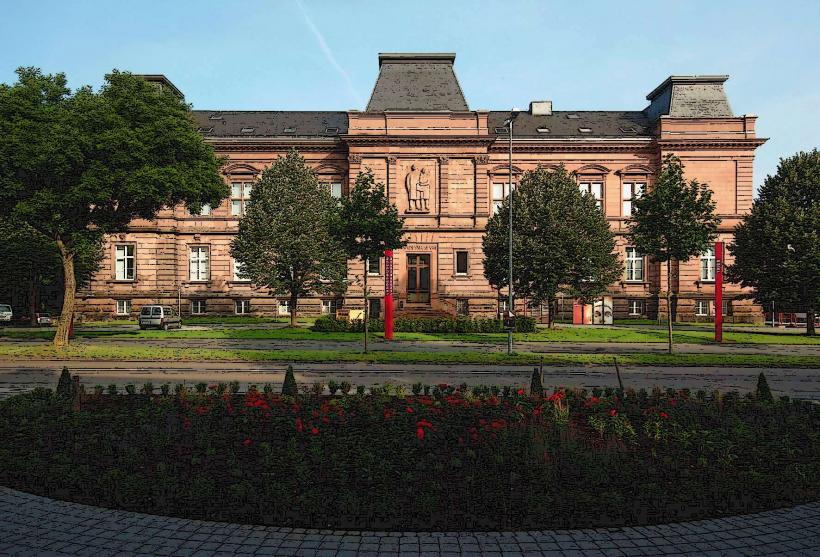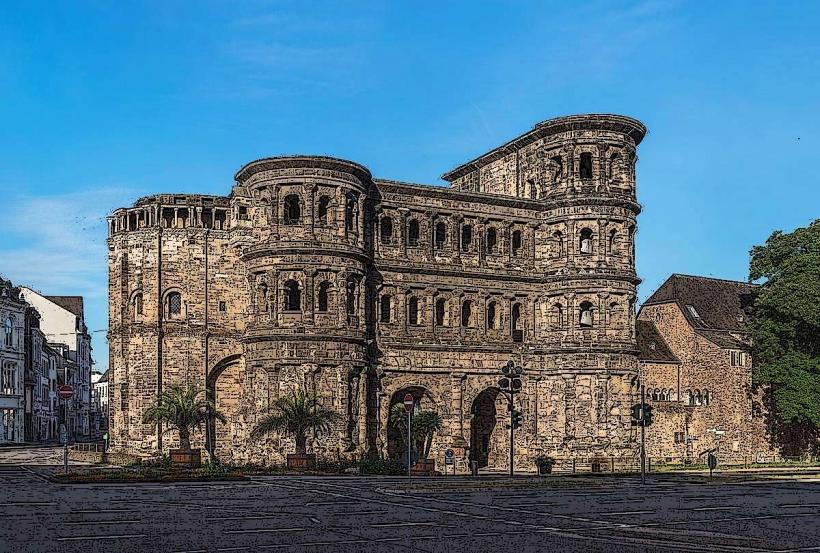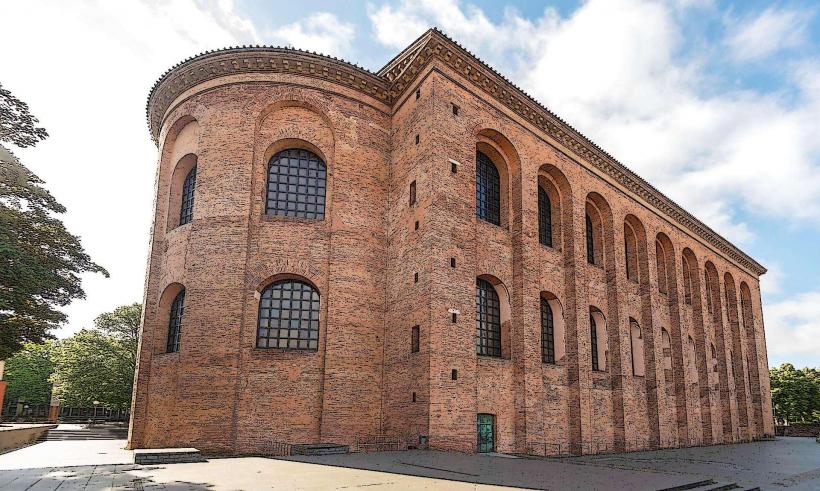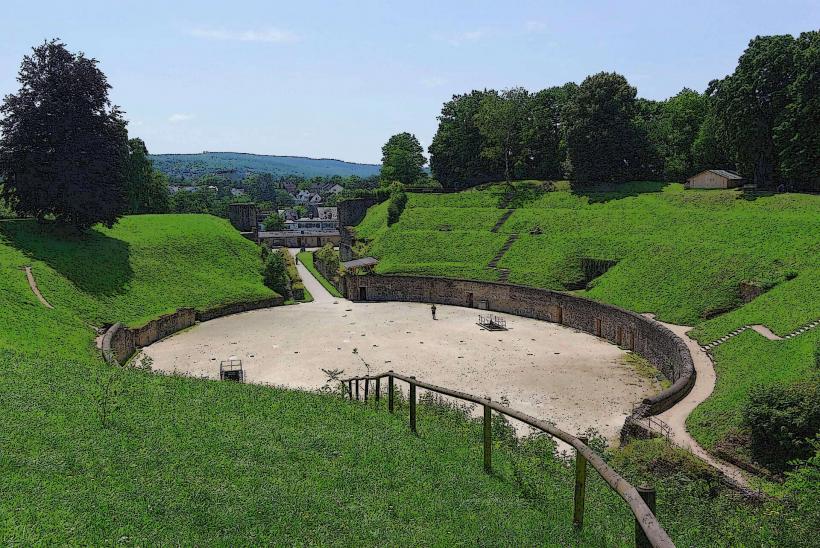Information
Landmark: Trier CathedralCity: Trier
Country: Germany
Continent: Europe
Trier Cathedral, also known as Cathedral of Saint Peter (or Trierer Dom in German), is one of the most important landmarks in Trier, Germany. It is the oldest cathedral in Germany and an outstanding example of Romanesque architecture with influences from Gothic and Baroque styles. As a UNESCO World Heritage Site, the cathedral is rich in history, religious significance, and architectural beauty.
Key Features of Trier Cathedral
Historical Significance
- Trier Cathedral dates back to the 4th century, making it the oldest cathedral in Germany. It was originally built during the reign of the Roman Emperor Constantine as a palace church for his mother, St. Helena, who is believed to have been instrumental in discovering the True Cross.
- The site has a long history of Christian worship, having served as the residence of early bishops of Trier and later as a pilgrimage site. The cathedral has undergone numerous expansions and renovations over the centuries, especially after the Destruction of the original church in the 5th century during the invasions by the Franks.
- Trier Cathedral was a bishop's seat from its early years, and it has played a key role in the religious and political life of the region throughout history.
Architectural Styles and Design
- The current Trier Cathedral is a combination of Romanesque, Gothic, and Baroque elements, with the Romanesque foundations laid in the 11th century and later additions made in the 13th century and beyond.
- The cathedral's impressive facade features a massive central portal with sculptural decorations. The Romanesque style is evident in the solid, monumental appearance of the structure, while the Gothic style is visible in the cathedral’s verticality, pointed arches, and ribbed vaults.
- The cathedral’s central nave is imposing, with side aisles, a transept, and a choir. The interior of the cathedral is filled with artistic and religious treasures, including stained glass windows, frescoes, and sculptures.
The Holy Robe (Heilige Rock)
- One of the cathedral’s most significant relics is the Holy Robe (Heilige Rock), which is said to be the robe worn by Jesus Christ before his crucifixion. This relic is highly revered, and it is displayed to the public only during special occasions, such as the Holy Robe Pilgrimage held every few decades (the last one was in 2012).
- The relic draws pilgrims and visitors from around the world, who come to see the robe and the cathedral’s other sacred artifacts.
The Trier Cathedral Treasury
- The Trier Cathedral Treasury is a museum that houses numerous important religious relics and artworks, including medieval manuscripts, chalices, and vestments. The treasury's collection reflects the cathedral's long history and its role as a center of religious and artistic production.
- One of the treasures in the treasury is the Trier Psalter, a beautifully illuminated manuscript from the 8th century, and a golden reliquary that once housed relics of saints.
The Cathedral’s Interior
- Inside the cathedral, visitors can admire its impressive Romanesque columns, Gothic stained-glass windows, and frescoes from different eras. The choir area is beautifully adorned with baroque altars, and the cathedral’s high altar features a depiction of Christ.
- The central nave is massive and features vaulted ceilings, creating an awe-inspiring sense of space. Side chapels and altars are scattered throughout the cathedral, each dedicated to various saints.
The Towers
- The cathedral has two distinct towers that rise above the city’s skyline. The West Tower is the taller of the two, standing at 65 meters (213 feet), while the East Tower is shorter. These towers are part of the cathedral’s iconic silhouette and can be seen from various points in the city.
- The towers were originally part of the Romanesque design, with later additions in the Gothic period. Visitors can climb the towers for a panoramic view of Trier and the surrounding areas.
The Cathedral’s Role in Trier’s History
- Trier Cathedral has been a site of royal coronations and important religious events over the centuries. It is historically significant as a palace church during the time of Constantine and has witnessed key moments in Christian history.
- The cathedral also played a major role during the French Revolution and the Napoleonic era, when Trier was part of France. Over time, it has served as both a place of worship and a symbol of Christian heritage in the region.
Visitor Experience
- Trier Cathedral is open to the public year-round, and visitors can explore its historic interior, view the Holy Robe, and learn about its long history through informational displays and guided tours.
- The cathedral is a center of Christian worship, with regular Mass services and special religious events, including celebrations during the Christian liturgical calendar.
- Visitors can also enjoy the peaceful atmosphere of the cathedral, with the opportunity to reflect and admire the historical and architectural beauty of the space.
Accessibility
- The Trier Cathedral is located in the heart of Trier, close to other important Roman monuments like the Porta Nigra and the Roman Baths. It is easily accessible by foot from most central locations in the city.
- The cathedral is fully accessible to people with disabilities, with ramps and elevators available for easier access to various parts of the building, including the treasury and choir area.
Cultural and Religious Events
- Throughout the year, Trier Cathedral hosts a variety of religious and cultural events, including choir concerts, organ recitals, and Christmas services. It is also a venue for pilgrimages and other important religious observances.
- The cathedral’s organ is a notable feature of the building and is often used for concerts and liturgical music.
Conclusion
Trier Cathedral is not only a masterpiece of Romanesque architecture but also a deeply significant religious site that draws visitors from around the world. Whether you are interested in its architectural beauty, its sacred relics, or its rich history, the cathedral offers a profound experience for all who visit. As a center of Christian life and an architectural wonder, Trier Cathedral remains one of the most important landmarks in the city and a must-see destination for anyone visiting Trier.






